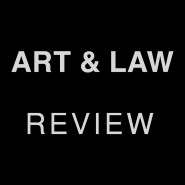Why China Is Afraid of the Chameleon, Ai Weiwei
 The last couple of weeks have seen an avalanche of articles concerning Ai Weiwei’s art projects and his ongoing fight against the Chinese government. The Chinese government’s insistence on lawbreaking and outlaw behavior on the part of Ai is nothing but a despotic veil covering the government’s true intent: the silencing, suppression, and censorship of artistic expression and dissent.
The last couple of weeks have seen an avalanche of articles concerning Ai Weiwei’s art projects and his ongoing fight against the Chinese government. The Chinese government’s insistence on lawbreaking and outlaw behavior on the part of Ai is nothing but a despotic veil covering the government’s true intent: the silencing, suppression, and censorship of artistic expression and dissent.
Reporting on Ai’s Hirshhorn retrospective, Roberta Smith’s recent NY Times article, The Message Over the Medium, concludes in a peculiar way.
Today we need all the great art and all the political agitation we can get. But it may be too much to expect that both will emanate with any frequency from the same person. By now, Mr. Ai’s art has helped carry him beyond art, where he is definitely somebody.
I wonder why Smith considers Ai’s “agitation” exclusive of an artistic practice? Perhaps it’s due to a worn out analysis which focuses the reading of art on a particular cultural lexicon and canon. Are Ai’s art works that quotidian and silent, specifically given the situation Weiwei currently faces? Are Ai’s crab installation not radically poetic?
Nonetheless, it is good to see that Ai’s plight is not forgotten. How can a global powerhouse expect to keep an artist silent given his major exhibitions and artistic-architectural projects, film, fame, and his relentless pursuit of free speech? In fact, Weiwei may be not only the strongest man in China, as described recently in the Wall Street Journal by the board members of CyberDissidents.org, themselves ex-political prisoners in Egypt, Iran, and Syria, but is perhaps also the most politically engaged artist worldwide.
A couple of weeks ago, Chinese officials said they were removing Ai’s business license because it had not met annual registration requirements. Ironically, Ai’s company has been unable to do so because police confiscated all its materials and its stamp when they detained Ai last year.
To call this absurd, impotent, and desperate attempt Kafkaesque is an understatement. Rather, it is reminiscent of men gathered around a board room table inspired by nothing other than to suppress the very same emotion and intellect they wish they could express. It is to attempt to murder a child’s need to call things as they truly are: unaffected and uncontaminated by cynicism, greed, power, and tyranny.
Nicholas Bequelin, senior Asia researcher at Human Rights Watch, speaking to The Guardian, seems to agree: “The authorities are dealing with Ai in the time-honoured tradition of making critics ‘wear small shoes’ as the Chinese expression has it: a never-ending series of petty bureaucratic harassment and administrative vexations designed to wear down its victim.”
It won’t work. It will never work.
If, in fact, Ai is the most politically engaged artist worldwide, aggravating both the so-called art world and Adorno’s “real” world, then I must disagree with Roberta Smith and propose that, rather than providing us with a singular notion of existence and art making, Ai in fact reminds us not only of the possibility of a “radical” alternative of and to existence, but to what art still has to offer. Terror may win the battle, but art will win the war.
Tags: Ai Weiwei, art, censorship, china, culture, dissent, Free Speech, law




Comments